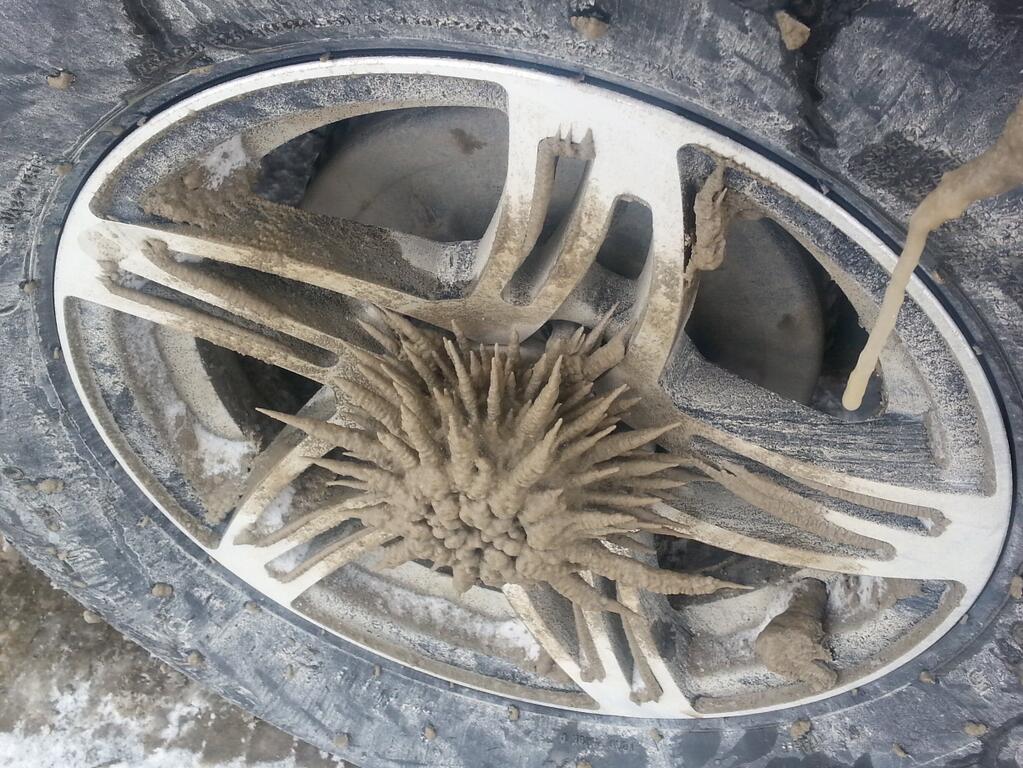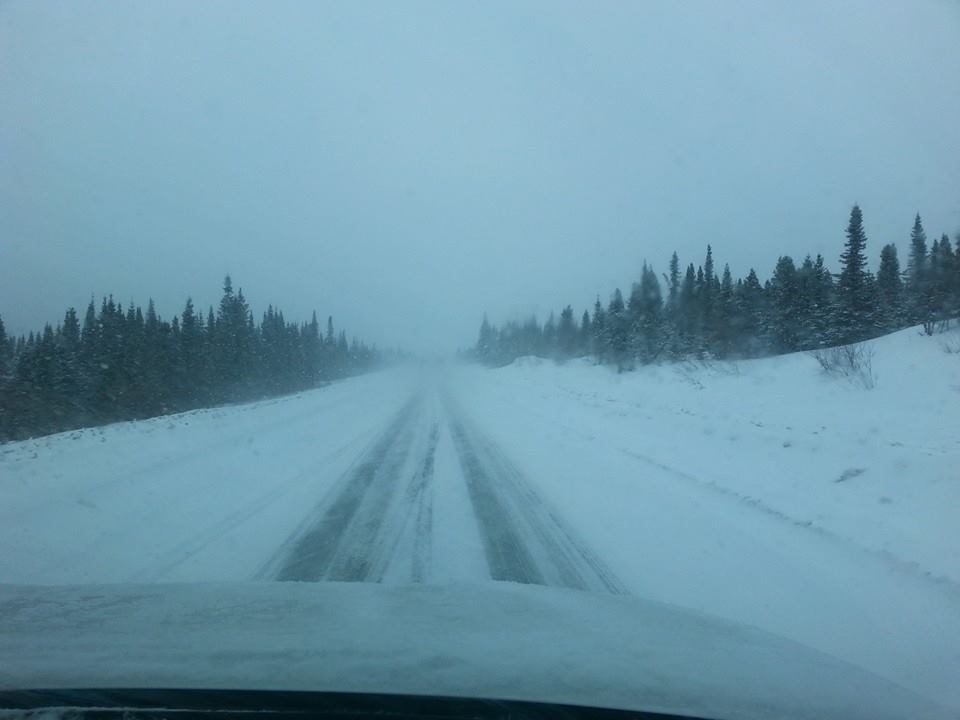Apr. 23, 2014
Tundras Conquer the Canadian Wilderness
When nature throws a curveball, Tundra drivers double down.
That's what two Canadian journalists did as they put a pair of Toyota pickups to the test on a nine-day drive through some of the most unforgiving terrain on the planet.
Earlier this year, Howard Elmer and Éric Descarries, two veteran automotive journalists and truck enthusiasts, approached us at Toyota with a challenge.
They wanted to take two Tundras for an epic 3,000 km road trip, starting in Toronto and running the length of the Trans-Labrador Highway, a recently-completed route across the wilderness of north-eastern Canada.
Since we're always keen to show off what the Tundra can do, we were happy to oblige, providing Howard and Éric with a brand-new 2014 Tundra CrewMax Platinum 1794 Edition and a tried-and-tested 2007 Tundra Double Cab 5.7L with 102,000 km on the odometer.
The Trans-Labrador highway runs through Newfoundland and Labrador, Canada's easternmost province, known for its extreme weather, wilderness and isolated roads. Roughly half a million inhabitants are scattered over an area exceeding 400,000 square kilometers. That makes for a population density of just under 1.4 people per square kilometer.
The road is still something of a work in process, having been built in a piecemeal fashion since 1992. In fact, it was only in 2010 that all the sections of the highway were finally connected. Some sections are still single-lane gravel track. The eastern section of the highway is particularly isolated, and around this time of year travelers are warned of extreme road weather conditions.

Including the journey from Toyota's HQ in Toronto, the plan called for a 3,138 km drive over a nine day period. But things didn't quite work out that way...
The interactive map below shows the route the team ended up taking.
After a formal send-off from Toyota's HQ in Toronto on April 2, the team covered 1,200 km in two days, breezing past Montreal and Quebec City and arriving in Baie-Comeau in the evening on April 3. On day three, the journalists got what they came for: snow, roads full of holes, and a giant dam. They even found the time to take their quadrotor for a spin.
When playtime was over, the team finished the day's driving, arriving in Wabush near Labrador City in the evening on April 4. The Tundras were unfazed, except for a single windshield chip from a stone.
Manic 5 is absolutely awe inspiring. Makes the Tundra look rather small. #TundraLabrador pic.twitter.com/L27UiFpuzH
— TundraLabrador (@TundraLabrador) April 5, 2014
Day four saw the team drive from Wabush to Churchill Falls. Despite some wintry weather, the day passed without incident, and Elmer wrote from the road: "Everything is still in one piece, and the four-wheel drive system and the tires handled the messy roads quite well."
The snow kept falling on day five (April 6), and this started to slow the team down. Both trucks were carrying hundreds of extra pounds' worth of snow, forcing en-route de-icing stops. This, combined with a 40 km stretch of "unpaved and pothole infested" road, made for some difficult driving conditions. Despite this, the team soldiered on.

At Toyota, we say that "the road makes the car". But that saying doesn't apply when your road is the Atlantic Ocean.
The team had originally planned to finish their journey by taking a ferry from the end of the highway to somewhere a little more populated. But there was no ice breaker, so the ferry couldn't run. If they wanted to make it back in time, Howard and Éric would have to turn back now, without even getting the chance to truly test the Tundras.
It seemed Mother Nature had won. After a few dejected tweets, the team prepared to start the trip back the following morning.
Until, of course, the "internet backlash".
Howard, Éric and the crew weren't the only ones disappointed by this turn of events. For hours after the news was announced, the expedition's dedicated social media accounts received tweet after tweet, post after post, asking them to reconsider. Faced with a barrage of questions, requests, suggestions, and-- let's be honest-- trolling, Howard and Éric started thinking of some new alternatives. They got in touch with Toyota. And the solution they came to?
Do the road, then turn round and drive back to Toronto. New trip distance: over 6,000 km.
Day six was a 400 km slog over potholes and through mud on an unpaved section of road between Goose Bay and Port Hope Simpson. By the evening, the once-white 2007 Tundra was sporting a fresh windshield chip and looking a lot more like its brown 2014 sibling.

Day seven was the last day of the outbound leg. Howard and Éric finished the unpaved sections of the highway, covering the remaining 140 km of gravel road from Port Hope Simpson to Red Bay on the Atlantic coast.
In a video later that day, Howard shared his feelings about their achievement: "All the followers of our Trans-Labrador trip wanted us to finish the road. And that's what we did. We accepted the challenge... But now, I realize we've got to do it again. All of it."
Thankfully, the trip back to Toronto didn't prove too challenging compared to the outbound leg. On April 11, the two Tundras rolled into the parking lot at Toyota's HQ in Toronto, having travelled 6,000 km and conquered one of the world's toughest roads... twice.
The road makes the car.

You don't visit one of the remotest places on Earth without a camera. Thankfully Howard, Éric and the team took plenty of photos, posting them on Facebook and Twitter from the road. Here are some of the highlights.
Find out more about the trip from the following official social media accounts:
Twitter (@TundraLabrador)
YouTube
Disclaimer: Toyota provided the team with vehicles, meals and accommodation. All opinions expressed in the videos are held solely by the participants.






















